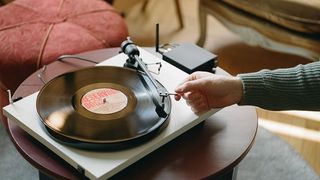Turntables today are as varied in style, features and price as they were during vinyl's heyday in the '70s and '80s, with Bluetooth and USB models sitting alongside purist designs, all vying for your attention. But which model is the best option for your needs and budget? We're here to help.
What Hi-Fi?'s experience in reviewing turntables and all things vinyl dates back almost as far back as the beloved record itself, so we can help guide you towards the record player that works best for you. This definitive round-up of the best turntables covers all types and budgets and can be enjoyed regardless of whether you're a complete vinyl newbie or a long-standing fan. Some integrate the all-important phono stage, others fly the flag for modernity by including Bluetooth streaming smarts or automatic operation, while purist, fully manual designs that prioritise sound quality above all can also be found within this expertly curated list.
Every record player in this guide has been comprehensively tested by the experienced What Hi-Fi? review team in our dedicated listening rooms, so you can be sure you're getting a genuine, expert recommendation. You can jump into our in-depth advice on how to choose your turntable, or scroll straight down to see the best record players you can buy right now.
The quick list
Here's a snapshot of the top turntables we currently recommend across all price points and for specific use cases. You can compare prices using the widgets below or jump to more detailed entries on each turntable.
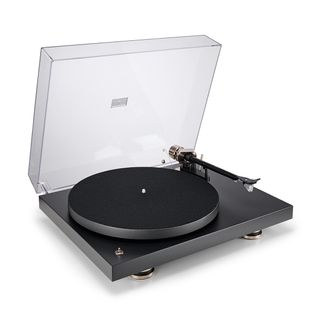
The Award-winning Pro-Ject Debut Pro is the best-value turntable currently on the market, thanks to a combination of classy build and superb sound quality that majors on clarity and precise timing. And all for a price that isn't too cheap or too premium – it's just right.
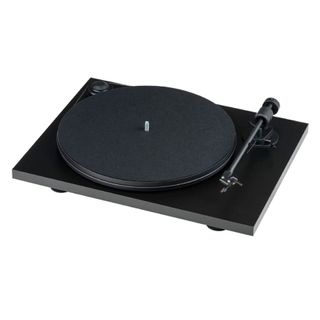
Ideal for first-time vinyl buyers on a strict budget, this Pro-Ject deck offers a neat, fuss-free purist design for the price of only a few records. Tonally even and enjoyable, and it won't destroy your freshly-bought LPs like some other cheap decks.
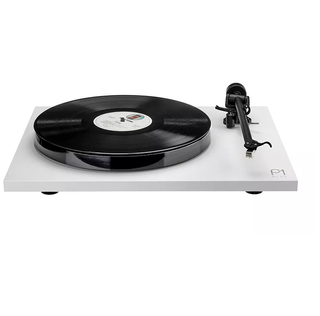
Rega's Planar 1 is another entry-level deck worth considering, but an even better option is the Planar 1 Plus, which comes with a built-in phono stage for added convenience. It's a supremely talented combination that sounds fantastic for the price.
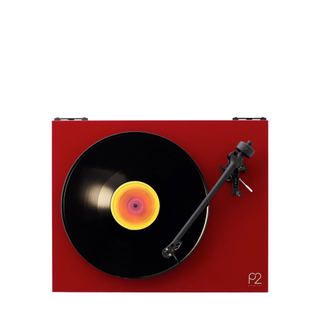
Rega's step-up model notches up the performance, delivering a punchy, rhythmically exciting and room-filling sound. There's no phono stage built in here, but it's the best option if you're looking to upgrade your first turntable experience without heading into the premium end.
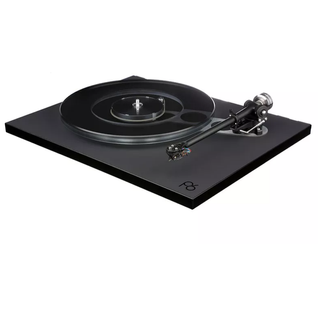
Rounding off the trio of Rega decks is the stunning Planar 6 with Ania MC cartridge, which is wonderfully articulate, insightful and dynamic. Make sure the rest of your hi-fi system is on the same level to get the most out of this superb turntable.
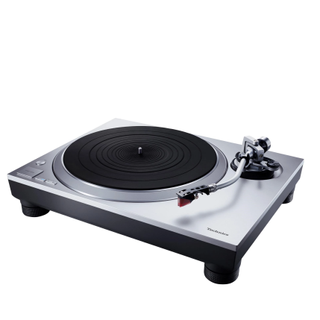
Technics is no stranger to the world of record players, and this terrifically musical and durable SL-1500C packs in a semi-automatic operation with a built-in phono stage that makes it supremely easy to use.
Load the next 3 products↓
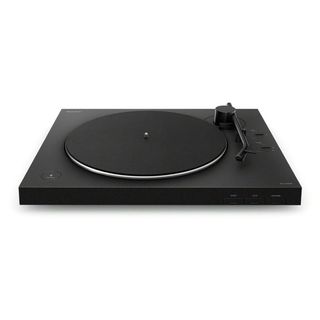
It may not look like much, but this Sony is a fully automatic deck that adds stable and versatile Bluetooth streaming to headphones. It's affordable, a breeze to use and is an entertaining listen.
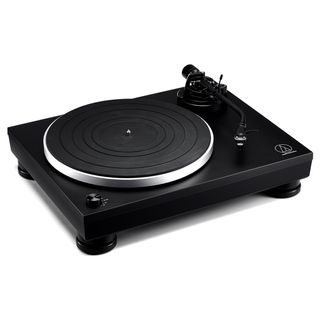
A brilliant, easy-to-use Audio Technica record player that sounds organised, detailed and fun. It also packs in a built-in phono stage as well as the ability to rip your vinyl to CD-quality files thanks to a USB output. Handy!
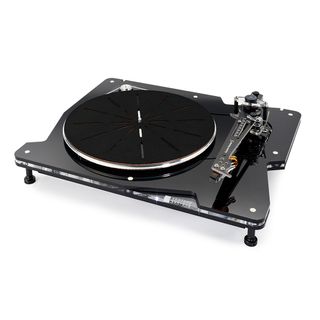
If you're serious about vinyl and have the money to spend (and a system to match), this gorgeous-looking and cleverly engineered Vertere should be high on your list. Class-leading insight and spectacular dynamics will bring your vinyl collection to life.
Recent updates
July 2024: Included up-to-date information and more insight from our in-depth reviews to each entry, and added more options to the Also Consider list for even greater choice.

I have been testing, reviewing and listening to turntables ever since I joined What Hi-Fi? over a decade ago, and have been swept up by the vinyl revival. The best turntables will deliver rock-solid and precisely engineered build quality, account for any vibrations affecting the deck, and be able to track a record's grooves accurately and in a stable manner to deliver the best sound quality. I have first-hand experience with every turntable in this list and they all sound fantastic (and look good while doing so), so whether you have a strict budget or have plenty of fun money to spend, I'm confident you'll find something you'll love in the recommendations on this list.
Best overall turntable
Pro-Ject's Debut Pro model has the prestige of not just being a multiple What Hi-Fi? Award-winner, but also for currently holding the Product of the Year accolade for the entire turntables category. It's the best value option overall, and no wonder: it's the most ambitious and sophisticated Debut model yet and it sounds fantastic.
It's a classy-looking deck and easy to set up. Pro-Ject’s engineers have carefully developed almost every aspect of the design, from the new carbon fibre and aluminium tonearm to the dedicated Pick It Pro cartridge.
This Debut Pro turntable is terrific at digging deep into the production and revealing layers of instrumental textures that most at this level ignore. It sounds incredibly precise and crisp. Its presentation is a little on the lean side, but the upside of such a balance is agility. It produces a stable and controlled sound too, one that retains its composure even when the music becomes dense and demanding. Stereo imaging and a spacious soundstage prove admirable and we are impressed with the sonic authority on offer.
Playing test favourite Nick Cave and The Bad Seeds' Into My Arms, we said in our original review: "It captures the song’s melancholy mood superbly, delivering Cave’s rich and gritty tones with an enviable degree of finesse. The accompanying piano is rendered with precision and a lovely sense of ebb and flow that simply carries us away with the music. It’s a musically convincing presentation, one where each instrument dovetails beautifully to add to the experience."
Pro-Ject isn't short of rivals at this price, mainly the stellar five-star Rega Planar 3/Elys 2, a legendary model that has long held the top spot in this particular price bracket in its various iterations over the years. The Rega deck is now pricier than ever before and offers a bit more in terms of dynamic expression and outright attack and excitement. But the Pro-Ject Debut Pro sounds a little cleaner and crisper, delivering low frequencies with an agility and tautness even the Planar 3 struggles to match. It goes to show just how talented this superb-sounding Pro-Ject deck is – we can highly recommend it.
Read the full Pro-Ject Debut Pro review
Best budget turntable
For those looking for a beginner turntable and have a small budget, but are interested in good quality sound, the Pro-Ject Primary E could be just the ticket. This deck doesn't have any extra features such as USB ripping, Bluetooth and automatic operation, but its purist design and wallet-friendly design are ideal for novices on their first step to proper vinyl obsession.
This long-running model remains the best cost-effective option around at its $299/£199 price point – which isn't a huge amount to pay for such a well-made budget turntable that prioritises sound over features.
The Primary E confidently nails the basics, from an even tonal balance to a delivery that’s clear and clean and spacious enough to keep things coherent. There's ample body and substance to every frequency, and the lively drive and momentum keep us tapping our toes and enjoying every record we spin on it. Entertainment is high on its mind, and we said in our original review: "Though it’s not capable of huge scale or reach, it sounds far away from being small or confined, too."
It's a basic, no-frills deck, but one that works smoothly and offers far better performance than you'd get with those more stylish, all-in-one, trendy-looking record players that don't respect your vinyl records as this Pro-Ject will. As a starter turntable, it's impossible to beat at this budget price.
Read the full Pro-Ject Primary E review
Best budget turntable with phono stage
If you're after the purist quality of a Rega turntable but want the convenience of a built-in phono stage to minimise clutter (and costs), then look no further. This Rega Planar 1 Plus is essentially the brilliant five-star entry-level Rega Planar 1 turntable fitted with the equally five-star Rega Fono Mini A2D phono stage. Both have won Awards, and Rega thought it only felt natural to combine them together. We absolutely agree.
Rega hasn't just stuck on the Fono Mini A2D and called it a day; the USB section has been taken out entirely and this cost-saving has gone into improving the audio quality of the phono stage. This means that not only does the Planar 1 Plus package cost less than if you were to buy the two audio components separately, but it also sounds a tad cleaner and times better compared with the more muscular, powerful sound of the separates option.
The Plus 1 is built to the same exceptional standards as all Rega turntables, with clean minimal lines and a very fuss-free set up. The inclusion of the phono stage means you can plug this versatile Rega deck directly into a pair of powered or active speakers, or even a Sonos multi-room system, making for a very tidy little vinyl set up – perfect if you're short on space. A rival such as Audio Technica's AT-LPW50BTRW also offers an internal phono stage and even Bluetooth streaming into the mix, but the Rega can't be beaten when it comes to sound quality.
The Planar 1 Plus sounds brilliant. It may start off a little lean, but give it a bit more time and it will reveal a full-bodied and rhythmically exciting performance. Rega's hallmarks of subtlety, agility, dynamics and drive are all on display. It sounds beautifully clean and crisp, with guitar strums, drum beats and voices all sounding very tactile and realistic. We said in our original review: "The 1 Plus has an open, spacious presentation too, with plenty of separation between instruments and vocals laid out with very little effort. It’s also highly skilled in how it handles the high frequencies."
It's a fun listen and is so versatile too. There are plenty of new turntables on the market that offer the convenience of a built-in phono stage, but none of them can quite compete with the Rega Planar 1 Plus when it comes to pure sound fidelity at this price level. If you're after a stylish, streamlined, cost-effective turntable solution, start here.
Read the full Rega Planar 1 Plus review
Best mid-price turntable
Rega is notorious for keeping its products pure and uncomplicated (the phono-stage-toting Planar 1 Plus is a rare exception), but that doesn't mean the Planar 2 is anything but remarkable for its mid-price point. What it does buy you are some key component upgrades over the entry-level Planar 1 that deliver even better sound quality – all packaged up in a smartly understated design.
Rega's no-nonsense set-up requires minimal effort, save for ensuring the speed is set correctly (speed change is manual), fixing the weight to balance the tonearm and setting the included Carbon MM cartridge’s tracking force to the recommended 2g. It's not quite 'plug and play', but it's straightforward enough.
Once we start spinning records, the Planar 2 more than makes a case for itself at this price. We hear punchy basslines and room-filling scale through this deck, that's further complemented by an impressive attention to detail and engaging rhythmic subtlety. There's dynamic subtlety and textural depth in spades, with the Planar 2 able to dig up so much detail and deliver all genres with enthusiasm and a good deal of organisation. "The ability to tie all the musical strands together and paint them on a precise and spacious canvas seems to come easy to the Rega, and in that aspect its delivery just works," we said in our original review.
There's no built-in phono stage, so it needs to hook up to a stereo amplifier that has one, or you can always buy a separate one. If that's within your budget, you'll find that the Planar 2 delivers a clear step-up in performance from the Planar 1 – and at a very competitive price.
For those wanting electronic speed change, more colourful finishes and a more laid-back sonic balance, the also-five-stars Pro-Ject Debut Carbon Evo is a solid alternative at this price.
Read the full Rega Planar 2 review

How do you set up a turntable? All the elements – tonearm, cartridge, headshell, counterbalance/weight, platter – should be included in most turntables, along with instructions on how to set up each deck. Setting up the cartridge and tracking force yourself are the trickiest but most important steps, so do take the time to set it up carefully and correctly. We'd recommend getting a tracking force gauge (they're affordable and easy to buy) to help check you've set the precise tracking weight and downforce according to the cartridge manufacturer's recommendations. If it's heavier or lighter, it will have an impact on the overall sound (and potentially impact the records' grooves) – so it's important to get it just right.
Best premium turntable
The Planar 6/Ania is yet another feather in Rega's cap and another big step up in performance. It’s an astonishingly refined and mature sound that conveys plenty of space. Some of that is down to the upgraded cartridge and tonearm, and the benefit of the separate power supply, but either way this overall package more than justifies its high price. Partnered with an equally talented amplifier and pair of speakers, this is a winning system if you're serious about your vinyl collection.
Rega's engineering principle across its turntable designs is of low mass and high rigidity. Too much mass impacts the sound, according to Rega, and thus this minimal design is a delicate balance of lightness and sturdiness.
We would highly recommend placing this deck on a sturdy support and away from any other electronics to minimise any vibrations. There are three aluminium-trimmed rubber feet on this deck – that's the only isolation you're getting here, so it pays to make sure the Planar 6 is positioned correctly in your home.
Do that, and you'll be treated to truly impressive levels of refinement. Its innate, understated ability to juggle subtlety, timing and balance is stunning – it's a mature-sounding player that values accuracy and faithfulness over bold, showy skills. It's still terrifically talented in the ways of agility, timing and clarity, but the Planar 6 is so much more solid, punctual and authoritative compared with its budget-friendly siblings. We said in our review: "The rhythmic ebb and flow is effortlessly precise – and when it goes quiet, it really goes silent. Timing is spot-on, and the clarity with which every instrument is presented is wonderful to hear. We like how the Rega Planar 6/Ania doesn’t shout about what it’s doing. It just gets on and does it."
Clearaudio's rather lovely and long-in-the-tooth Concept MM is another viable option at this premium price point, but the Planar 6 beats it hands-down in terms of outright insight, rhythmic precision and excitement.
Read the full Rega Planar 6/Ania review
Best premium turntable with phono stage
Even if you've never heard of a Rega or a Pro-Ject, you will definitely have heard of Technics. The brand is still going strong when it comes to turntables, both for DJs and audiophiles. While we love the high-end SL-1000R model (so much so that we use it as part of our listening room's reference testing system), the SL-1500C is much more affordable, and it's also one of the best record players we've heard at around a grand that includes a built-in phono stage.
It uses a core-less direct drive motor with clever speed management circuitry and the company's trademark S-shaped arm, which is attached to an Ortofon 2M Red cartridge. The engineering and build quality of the deck is of a high quality; everything is pleasingly put together with precision and it feels very durable and robust too. It comes with a detachable headshell and adjustable arm height – bonus features that make it possible to upgrade and adjust your chosen cartridge.
Sonically, the Technics is equally pleasing. Songs are relayed with a brilliant sense of dynamism and energy, and even more complex or orchestral recordings are delivered with a tremendous amount of composure and organisation. There's clarity and precision, too, and it can track multiple instrumental strands with considerable skill.
There's subtlety to the quieter moments alongside the more bombastic crescendos. Playing Nitin Sawhney’s Prophesy album, we said in our review: "The Technics revels in the album’s complex rhythms and thickly layered production. There’s plenty of punch here, particularly at bass frequencies where the deck delivers an impressive combination of agility, punch and depth."
While some may prefer the slightly more insightful sound of the Rega Planar 3/Elys 2, the Technics SL-1500C offers crisp presentation, a built-in phono stage and electric speed control, making it a great choice for those who want a bit more ease and flexibility as opposed to being vinyl purists.
Read the full Technics SL-1500C review
Best Bluetooth turntable
This Sony deck is our go-to recommendation for anything looking for a Bluetooth turntable. It's a fuss-free set up, the Bluetooth pairing is excellent (and it can be connected to up to eight devices), it's fully automatic in operation, and there's a built-in phono stage. It's as feature-packed as record players come and this has the bonus of being very affordable too. Keep an eye out for regular deals throughout the year for even better value for your money.
Despite the market being awash with newer, sexier-looking record players with Bluetooth streaming powers (from the likes of Lenco, Audio-Technica and even hi-res wireless options such as the Cambridge Audio Alva TT V2) this long-running Sony continues to deliver the best combination of convenience and performance for a Bluetooth model at this price.
There's a healthy dose of drive and attack to music – the Sony unearths a fine level of detail and peels back enough layers of emotion to keep the listener interested. We found the Bluetooth connection sturdy during testing with compatible speakers and headphones, with the connection strong enough that could walk into another room and still listen clearly using a pair of Bluetooth headphones.
A fully manual deck like the budget Pro-Ject Primary E or the step-up Rega Planar 1 Plus does sound even punchier and clearer with a greater degree of insight, while other Bluetooth-boasting models lack the expertise and sonic talents of the Sony. It's the Sony's combination of entertaining sound, user-friendly features and budget price that makes it so appealing and easy to recommend.
Read the full Sony PS-LX310BT review
Best USB turntable
Audio-Technica’s original AT-LP5 turntable was a winner. Launched in 2016, its combination of solid engineering, useful features and fine sound was enough to make it one of our go-to recommendations for anyone wanting a sensibly priced, fuss-free record player with the added bonus of a USB output.
It's no surprise, then, that Audio-Technica hasn't changed this winning formula too much for the current AT-LP5x model. But the brand has made some improvements throughout the deck. There's a new cartridge that's easier to fit, the built-in phono stage can now cope with both moving magnet and moving coil cartridges, and it has added a 78rpm speed option.
Aside from these neat additions and tweaks, the LP5x's audio performance mirrors its predecessor closely. It sounds a touch cleaner and clearer than before, but without losing any of its composure or dynamically pleasing presentation. We said in our review: "Detail levels are high and all that information is rendered with organisation and composure. This deck never sounds as though it is struggling, no matter how complex the music gets." Stereo imaging is solid and composed, too.
The USB ripping feature means you can digitise your vinyl collection in CD quality WAV files up to 16-bit/44.1kHz and 48kHz (many current USB turntables only offer ripping in poor MP3 quality).
If you're after a well-executed design that's well-built with useful features and sounds great for the money, this appealing AT-LP5x is worthy of a spot on your shortlist.
Read the full Audio Technica AT-LP5x review
Best high-end turntable
If you are serious about vinyl and have the big bucks – and a sufficiently talented system to match – then you'll want to consider a high-end turntable. There are plenty of five-figure options from the likes of Linn, Michell, SME and Rega, but it's Vertere's 'entry-level' (which is still really rather pricey) DG-1 S deck that we will enthuse about if your budget allows you to play at this level.
An updated version of the 2021 Award-winning DG-1 Dynamic Groove, the current Award-winning Vertere DG-1 S model continues to offer a fair dose of the performance of Vertere's top-end turntables but at a far more approachable outlay (only four figures...). Clever construction and engineering further advance this deck's performance, which is designed to be easy to use. The striking and stylish platter design is certainly eye-catching compared with more traditional design, while the unconventional flat tonearm is made of two bonded pieces of a five-layered polymer that aims to reduce more resonances compared with the usual metal tube arms.
It even has the option of a fitted Magneto cartridge for those who want a complete package. If you do want to improve the deck's sound even further, it can be worth investing in the more premium Sabre MM cartridge.
The new Vertere DG-1 S edition builds on that excellent original and remains one of the best-sounding turntables we've heard at this level. It's a terrific-sounding deck that brims with energy and drive. It is one of the most rhythmically and dynamically engaging turntables we've ever come across, turning its hand as deftly to high-octane, multi-faceted recordings as to more sombre, pensive and elegant tracks.
We’re impressed with the level of detail too, and it is able to dig up plenty of information and organise it into a cohesive and musical whole. As we stated in our review: "Despite the Vertere turntable resolving an immense amount of detail, we find ourselves lost in the music rather than encouraged to analyse the recording or production."
It is a hugely entertaining sound, one that’s rhythmically surefooted and has a spring in its step when it comes to rendering dynamic nuances. It sounds powerful and composed, and we particular;y love how taut and tuneful the Vertere delivers bass frequencies too.
There’s no denying the fact that the Vertere DG-1 S is up against some mighty competition (such as the excellent Rega Planar 10), but given what we’ve heard, it can go into any such comparisons with confidence. If you're able to afford it, you must audition this terrific turntable.
Read the full Vertere DG-1 S/Magneto review
Also consider
- Rekkord Audio F110: This is pretty much the ultimate in fuss-free record replay – it is a fully automatic design, so set-up is about as easy as it gets. And performance is very admirable indeed, hitting a performance level that sits out of reach of other automatic options we’ve tried.
- Audio Technica AT-LPW50BTRW: A stylish, Bluetooth turntable that delivers a smooth, easy-going sound that's hugely likeable. It's fitted with a built-in phono stage and while Bluetooth pairing can be a little fiddly, it's wonderfully versatile and good-looking deck at its sub-£500/$500 price.
- Rega Naia/Aphelion 2: If your budget is as big as your love for vinyl, Rega's top-class and utterly high-end Naia could well be the player for you. Indeed, it sets a sky-high standard for resolution and transparency – and is pretty handsome too.
How to choose the best record player for you
The source of your hi-fi system - be it a streamer, CD player or record player - is a crucial component; as the saying goes, 'rubbish in, rubbish out'.
When it comes to choosing your turntable, first things first: decide on your budget. It should be no more than around a quarter of your system's cost, otherwise, it's unlikely your amplifier and speakers will get the most out of your deck.
Once you've nailed down your budget, decide on the features you require or want. Belt drive or direct drive design? Do you need a phono stage built-in or prefer a purist design? What about the cartridge – is it included or do you have to buy your own? Is Bluetooth streaming or USB recording important to you? Are you happy with a fully manual operation, or would you prefer a less fussy electronic speed change or automatic operation? Turntables have plenty of features, so it pays to check the details to find out which deck you'll be happy to live with. Make sure you have a checklist based on your needs to help you narrow the search.
Design can play a huge factor – if you have a particular aesthetic in mind for your turntable setup, check that it's available in the finish and style you want. The flashier looks of a Technics or Vertere deck might not be for those who prefer the simplicity of a Rega turntable, while Pro-Ject's colourful choices can appeal to many. We would overall choose a turntable on its sonic merits, but taking pride in your hi-fi's looks matter, too.
We would advise you against the 'suitcase'-style record players that remain trendy and are often rather cheap. Many of these turntables don't have the careful engineering or precise build quality that's so crucial to ensuring the tonearm is stable and the needle is accurately reading a record's groove, and many of these kinds of decks also don't let you adjust the tracking force of the cartridge. If this is too heavy (as we discovered with some of the cheaper Crosley decks), then this can damage your records. We don't want that.
Additionally, make sure you read up on the sonic characteristics of all the products in your system to match your chosen turntable and vice-versa. Not all five-star products are equal, and every hi-fi setup benefits from the right partnering.
Once you have made your choice, it's also crucial you set up your turntable correctly. While some record players are relatively "plug and play", many require a little more time and effort to hear at their best. If you are buying a more high-end record player, ask the dealer if they can arrange a demo before you commit to buying.
This is a quick run-through of the basics of choosing a turntable. But if you want to know more or need more in-depth advice, read our complete guide to choosing the right turntable.
How we test record players
What Hi-Fi? has been reviewing turntables ever since the first magazine issue was published in 1976, and our reviews have remained independent, trusted and thorough ever since across print and online.
The current What Hi-Fi? team has more than 100 years of collective experience in reviewing, testing and writing about consumer electronics – and that includes plenty of record players. We have purpose-built, acoustically treated testing facilities in London and Reading, where our team of expert reviewers do all our in-house testing. This gives us complete control over the testing process, ensuring we are consistent across all product reviews and in our advice.
When testing turntables, we ensure we place them on a stable, level surface, set them up correctly with the supplied or appropriate cartridge, and partner with price-appropriate and various partnering electronics. We use a variety of amplifiers and phono stages (if it doesn't have one built-in) and also test out extra features such as Bluetooth and USB recording, if the record player has them. We also take note of the turntable's build quality and how easy it is to use on a daily basis. Most of all, we spend plenty of time listening to the turntable, and play a variety of records in a variety of music genres, to test the turntable's sound quality. These are just some of the best vinyl records we use during testing, while each reviewer will have their own collection of records to play.
All new turntables are tested in comparison with the best-in-class model at the same price level. We keep five-star and What Hi-Fi? Award-winning models across each price bracket in our stockroom so that we can benchmark and compare all turntables that enter our listening rooms. These comparisons are bread-and-butter to our reviewing process, and ensure we give buyers the best advice on which turntable to buy at any given price.
All turntables are listened to by multiple members of the What Hi-Fi? reviewing team, and the final review verdict is agreed upon by the team as a whole rather than a single reviewer. This method helps to ensure consistency and avoids individual subjectivity and biases. We are proud of delivering honest, independent and unbiased reviews for nearly 50 years, there is never any input from the brand, PRs or commercial teams on our reviews or verdicts. That's why our reviews are trusted by customers, retailers and manufacturers alike.
From our reviewers, we hand-pick only the best turntables at each price to feature in this Best Buy guide. That's why if you take the plunge and buy one of the products recommended here, you can rest assured you're getting a What Hi-Fi?-approved product.
You can read more about how we test and review products on What Hi-Fi? here.
FAQ
What is better: direct drive or belt driven turntables?
There are two basic designs of turntables: direct drive and belt drive. This relates to where the motor is positioned. The motor is what sets the speed and makes the platter (on which a vinyl record sits) rotate.
Direct drive designs have the motor placed directly under the platter. This method allows for faster start-up speeds and better rotational stability (how consistently the platter runs at the correct speed). The downside is that unwanted vibrations are more easily introduced. This affects the cartridge and how it tracks the groove in a record, which means distortion is added to the final sound.
Belt drive designs have the motor offset from the platter, and use a belt (or sometimes multiple belts) wrapped around the spindle and the main platter in a pulley system to rotate. This keeps the platter isolated from those pesky vibrations, but because of the different forces being pulled on the belt (which is usually made of a rubber material), the belt can get stretched or lose its tautness over time. This means the rotational speed potentially isn't always consistent, and you'll likely need to replace the belt after a few years.
Which design the manufacturer employs is a matter of preference and which compromise they're happier to deal with, and each brand takes care when making a turntable to account for the flaws in either design.
In terms of sound, that entirely depends on the individual turntable. Many reliable Technics decks use direct drive, while Rega always uses belt drive designs – both make excellent-sounding turntables, so one design isn't necessarily better than the other.
Do new turntables play old records?
The beauty of an analogue source like a turntable is that the principle of the design has stayed the same across decades. Whether it's a turntable from the 1970s, the 1990s or 2020s – it plays records the exact same way. How well-made the new turntable and its tonearm are, the speed stability and accuracy, and how precisely the cartridge and stylus can track the grooves on the record – these are what matters most when playing your record collection. So you simply have to choose the best-performing turntable for your budget and needs (our recommendations in this list should help!)
What condition your old records are in is another factor. You might need to get them cleaned (there are various record cleaning equipment available) and depending on the type of records you have – 33.3, 45, 75 rpm – it's worth checking that your new turntable can play these different speeds or has an adapter that will let you play all record types.
Do I need to buy speakers for my turntable?
Yes. While you can buy record players with speakers built in, we tend to find these generally perform poorly. A turntable performs better without additional drivers and vibrations affecting the way it tracks the grooves on a record. We'd recommend a pair of good speakers that match your turntable – sonically and price-wise – to get the best performance.
If your turntable has a phono stage built-in, active speakers (ones with amplification built-in) such as Ruark MR1 Mk2 or KEF LSX II LT are ideal pairings. Otherwise, there's plenty of choice when it comes to passive speakers from brands such as Elac, Bowers & Wilkins, Q Acoustics, KEF and more. Check out our guide to the best speakers and best active speakers to find the right pair for your turntable.
Do I need a phono stage for my turntable?
Yes, always. Every turntable will need a phono stage – whether that's a standalone unit or built into the turntable, or integrated into your amplifier or speaker – to be able to play a sound that you can hear through your speakers.
Why? The audio information stored in a record's groove can be in an area as small as a micron (one-thousandth of a millimetre), so the scale of the task to retrieve it and playback through your speakers is immense – one that your standard line-level stereo amplifier isn't able to do on its own.
The physical limitations of vinyl mean that the original audio signal has to be altered before it can be recorded onto its tiny grooves – low frequencies are reduced in level and the highs are boosted. This is where the phono stage (or phono preamp) comes in. It has to reverse the response built into it – one that boosts bass and flattens treble to exactly the right degree, which should result in a tonally even presentation for the audio signal. And it has to amplify the signal. The cartridge signals from tracking the groove can be as low as a thousandth of a volt (CD’s output is specified at 2V, for instance) so the signal has to be amplified massively before the line-level stage of a stereo amplifier can take over.
You can learn more about how a vinyl record makes a sound.
Are old vinyl players better than new turntables?
If you have an old record player, say a few years or decades old, the same principles apply: the build quality, the cartridge choice, how reputable the manufacturer was and the care it took in making the record player, and overall performance all matter. A well-made or high-end turntable should last you decades, if not a lifetime, as long as you still enjoy listening to it.
As long as you've kept the turntable in good condition over the years and paired it with capable matching electronics, it should still sound good. The very well-regarded Roksan Xerxes turntable, for instance, still sounds as good today as it did in the late 80s/90s, according to our reviewers.
New turntables have the advantage of refining a design with newer, cleverer materials or manufacturing processes. So they can sound cleaner and more precise with every new generation; in our experience, Rega and Pro-Ject turntables have generally improved with every iteration of their Planar and Debut ranges, respectively. Newer turntables these days also include extra features like Bluetooth streaming or USB recording – so it depends on what you require.
Turntables generally have long shelf lives, and don't require software upgrades like digital-based products do. Long-standing models from Michell Engineering, Clearaudio and Linn still sound fantastic and perform beautifully today.
Recent updates
- February 2024: Updated our advice and testing process, and added FAQ section to help buyers with the most asked questions about turntables.
- November 2023: What Hi-Fi? Award-winning products are labelled following the 2023 annual What Hi-Fi? Awards Best Buys and Product of the Year announcement.
